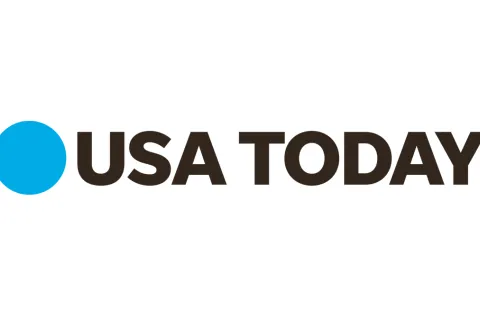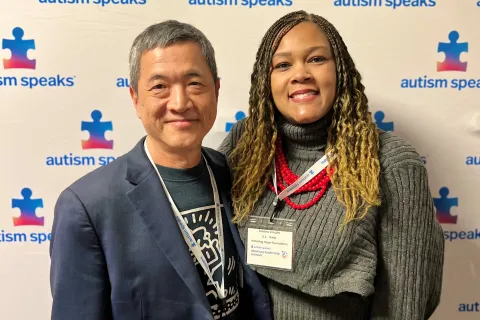Five Steps to Becoming an Inclusive Youth Organization
Leading the Way: Autism-Friendly Youth Organizations
Below is an excerpt from Leading the Way: Autism-Friendly Youth Organizations, a guide to help youth organizations include and support girls and boys with autism in their programs.
- Examine your organization’s mission statement.
Does it encompass your philosophy on inclusion and your desire to serve people of all abilities? An example of a strong inclusive mission comes from the Boys and Girls Clubs of America: “To enable all young people, especially those who need us most, to reach their full potential as productive caring, responsible citizens.” Make sure that your mission statement is not exclusionary and invites participation from all. If you aren’t sure what message your mission is sending, share it with a few others and ask for feedback. Share your inclusive mission statement wherever you can. Display it in your facilities. Include it on your website and on printed materials. This is a statement that all staff and volunteers should be familiar with.
- Review your admissions policy.
Take a moment to review your admission policies. Are they very rigid? Are they mostly based on achievement of certain skills? Youth organizations must have policies related to admission and enrollment, but it is important to make sure they do not exclude groups of people by demanding a particular skill. Example of a Rigid Policy An organization’s policy states that youth will not be allowed in the swimming pool with flotation devices. Many children with disabilities would benefit from the opportunity to be in a pool with their typically developing peers, but would not be able to participate without a flotation device. Therefore, an inclusion support you could provide would be to allow a youth to participate with a flotation device. Example of a Skills Based Requirement A music camp may have a requirement that to participate a child must perform a solo song, dance or instrumental arrangement. This may not be possible for all children. An example of an inclusion support would be to find another way for the child to participate – perhaps as a technical assistant.
- Create or modify your existing intake and enrollment process to be mindful of inclusion.
A youth organization’s intake and enrollment process helps acclimate the family to your services and gives them the opportunity to provide you with the information you need to serve their child. This process usually begins with a telephone or e-mail inquiry from a parent. It is important that the people who respond to these general inquiries are aware of the organization’s commitment to inclusion and have participated in basic training. It is very easy for a parent who is used to running into roadblocks to get discouraged. Usually, if there is an interest from the family, the parent and child will visit the program so they can see the facility and get more information. This is a good time for you to learn more about the child, what the family’s goals are and the need for accommodations or support might be. At the end of this section is a list of sample intake questions to use when speaking with families. This is also a good time to assure parents that the informationabout their child will be kept confidential.
- Other things to consider with the family when they are enrolling their child:
- Establish a plan for ongoing communication, whether it is a written log, phone calls, e-mails, or check in at drop off or pick up.
- Be thorough in your description of activities. Ask questions and be a good listener.
- If the participant uses assistive technology, consider asking the family to train a staff member on the equipment.
- Invite the parent to share information about the child with program staff at a staff meeting or other appropriate time.
- Registration Do’s and Don’ts
- If your program is full, you are not required to create a space for a child with a disability, but you also cannot deny a space if there is an opening because of the disability.
- Your registration and/or enrollment form should include a question that asks whether the participant requires any type of accommodation for a medical condition or disability.
- You may not ask for a diagnosis, but you should ask open-ended questions that will help you understand what kind of supports will be needed.
- Evaluate your program from an inclusion perspective.
Use the checklist provided at the end of the Inclusion section to evaluate your program as you plan for inclusion. Remember, for inclusion to be effective, the process must involve everyone from board members to program staff to the receptionist and the custodial team. Everyone working in the organization needs to understand the commitment to inclusion and be allowed to share their thoughts and have an impact on decision-making.
- Make a commitment to training for all staff and volunteers.
Committing to ongoing training for staff and volunteers around inclusion is crucial to the success of your program. The organization’s philosophy of inclusion should be regularly communicated – and the most successful training not only raises awareness about people with disabilities, but also increases the knowledge and skills of your teams.
- Lots of Ways to Learn
- All new employees and volunteers should receive orientation that includes information on inclusion.
- Provide orientation that includes information on inclusion for all new employees and volunteers.
- Give presentations at staff or other regularly scheduled meetings.
- Incorporate job coaching from supervisors or senior staff members
- Attendance at inclusion-related conferences
- Begin online training
- Share stories about successful inclusion experiences in organizational materials • Assign seasoned staff to present training that they have researched at meetings with other staff.
- Have families of children with autism speak at meetings.







